

Moorland Hotel on Dartmoor, where a young Agatha Christie completed her first novel, The Mysterious Affair at Styles.

A series of Hercule Poirot stories appeared in The Sketch in 1923. Poirot’s portrait was drawn by W. Smithson Broadhead for the series.

Agatha Christie in 1926, the year of her disappearance.

The ‘Silent Pool’ at Newlands Corner. It was dragged by the police at the start of their search for Agatha Christie when her car was found abandoned.

Police beaters search for clues which might lead them to Mrs Christie.

There was a large public response to the disappearance of Agatha Christie and many joined the renewed search at Newlands Corner.

George Best who discovered Mrs Christie’s abandoned car.

The notice that Agatha Christie, using the name of Teresa Neele, placed in the personal columns of The Times on 11 December 1926.

A huge crowd gathered on the platform at King’s Cross to await the arrival of Agatha Christie and her husband, Archie.

Charles Laughton was the first stage Hercule Poirot in Alibi at the Prince of Wales Theatre in 1928. Alibi is the stage version of The Murder of Roger Ackroyd. A close-up of Charles Laughton’s Poirot which appeared in The Graphic on 9 June 1928.

Agatha Christie’s next play, Black Coffee, which was first performed in 1930, has remained popular and is often produced by amateur dramatic groups or played in repertory or on tour. Here Kenneth Kent plays Poirot in Black Coffee on tour in 1951.

A scene from the production of Alibi in 1928 with Laughton as Poirot.

Professor C. Woolley. Max Mallowan was Woolley’s assistant at the excavations at Ur in the late 1920s,

The ‘death pit’ (foreground) containing 74 victims of human sacrifice which were found during excavations at Ur led by Professor Woolley in 1929.

One of the statues uncovered on the dig at Ninevah.

The old city of Ninevah excavated by Dr Campbell Thompson in 1931. Max Mallowan was Thompson’s assistant.

Ruth Draper whose one-woman shows in London suggested to Agatha Christie the character of Carlotta Adams in Lord Edgware Dies.
The S.S. Nefertari. It was such a river-steamer that Agatha Christie used as the setting for Death on the Nile which was published in 1937.

The Old Cataract Hotel at Aswan where Poirot broke his journey up the Nile.
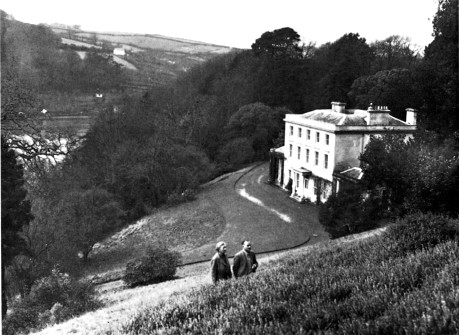
Agatha Christie and Max Mallowan in the grounds of Greenway House. They bought Greenway with its 33 acres of ground in 1939 for £6,000.

Francis L. Sullivan played Poirot again in 1940 in Peril at End House. Here Poirot helps to concentrate ‘the little grey cells’ by building a house of cards.

John Hodiak and Sylvia Sidney in A Stranger Walked In, the Hollywood film of the play Love from a Stranger which Frank Vosper had adapted from a Christie short story.

Walter Huston, Louis Hayward, Roland Young in the 1945 version of Ten Little Niggers produced by René Clair.

Agatha Christie checks the proofs of The Hollow, published in 1946.
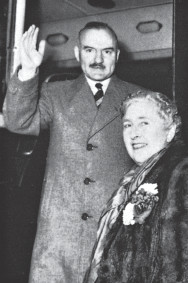
Agatha and Max leave for Baghdad to continue archaeological excavations in 1950.
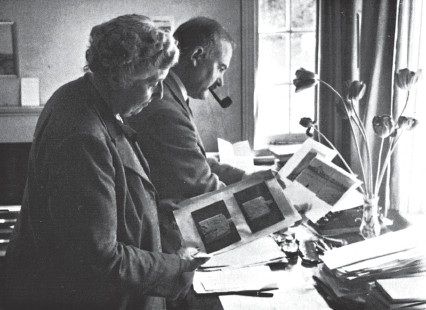
Agatha Christie and Max Mallowan look at photographs of archaeological finds.

Agatha Christie writing at her desk at Winterbrook House in 1950, the year A Murder is Announced was published.

A scene from The Hollow produced in 1951 by Hubert Gregg. Inspector Colquhoun (Martin Myldeck) shows the murder weapon to Gudgeon (A.J. Brown).
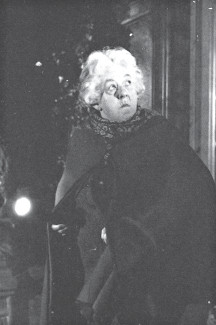
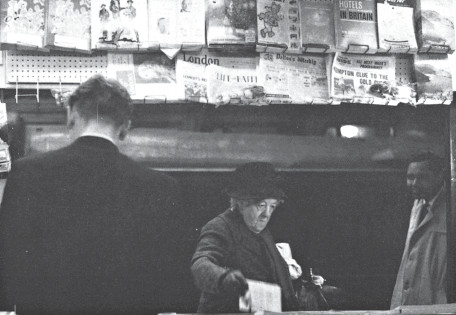
Of the four films starring Margaret Rutherford as Miss Marple, Murder, She Said, an adaptation of 4.50 From Paddington, was the best.

Agatha Christie attends the first night of The Mousetrap.
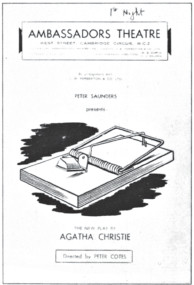
The programme for the first night of The Mousetrap.

Agatha Christie at a dress rehearsal in 1953 of Witness for the Prosecution with David Home (the Defence), Percy Marmont (the Judge) and D.A.Clark-Smith (the Prosecution).

Margaret Lockwood with Agatha Christie after signing up to play in Spider’s Web.
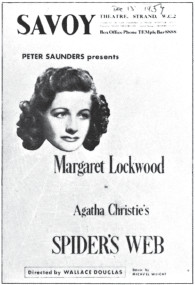
Poster for Spider’s Web.
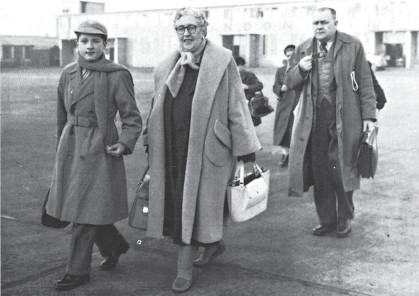
Agatha Christie with her grandson Mathew in 1955 as they leave for Christmas in Tripoli.

Agatha Christie with Peter Saunders who has presented all her most successful plays.

Marlene Dietrich in a scene from the 1957 film version of Witness for the Prosecution.

Agatha Christie with John Mills and Richard Attenborough. Mrs Christie holds the gold mousetrap which she presented to the Ambassadors Theatre in 1958.

Agatha Christie (bottom right) at a party at the Savoy Hotel on 14 April 1958 to celebrate 2,239 performances of The Mousetrap which made it London’s longest running show,

Mary Law (left) watches as Agatha Christie cuts the cake on the sixth anniversary of The Mousetrap in 1958.

Agatha Christie with Max Mallowan in his study in Greenway House. Greenway was requisitioned during the Second World War.
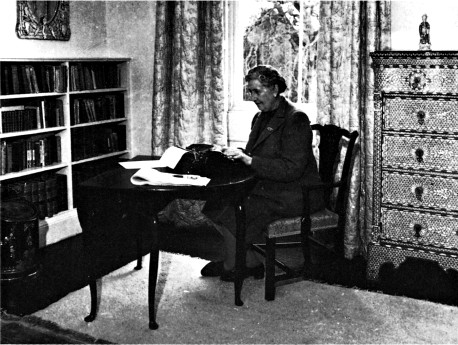
Agatha Christie at work in Greenway House.
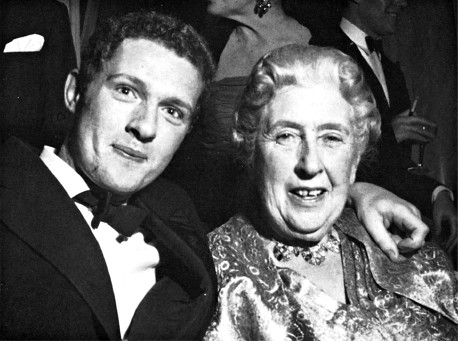
Agatha Christie with her grandson Mathew in 1962. Agatha made over the rights in The Mousetrap to Mathew when the play was first produced.

The boathouse at Greenway House on the river Dart. Agatha Christie used this as a model for the boathouse where ‘the body’ was discovered on the Murder Hunt in Dead Man’s Folly.

Agatha Christie is helped by Richard Attenborough, one of the original cast of The Mousetrap, and Dame Sybil Thorndyke, as she cuts the birthday cake at the tenth anniversary party for The Mousetrap at the Savoy Hotel on 26 November 1962.

Margaret Rutherford as Miss Marple in Murder Ahoy (1964) with Stringer Davis, Margaret Rutherford’s husband,

Robert Morley and Tony Randall in a scene from the 1966 film The Alphabet Murders, an adaptation of The ABC Murders.

Agatha Christie in the library of Greenway House.
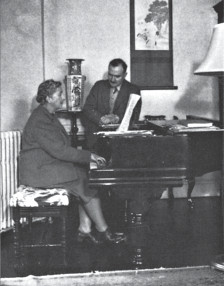
Agatha Christie plays the piano for Max Mallowan at Greenway House.

Agatha Christie paints a mantelpiece at Greenway House. She once said that she was always ready to be distracted from her real work, writing, by doing something completely different,
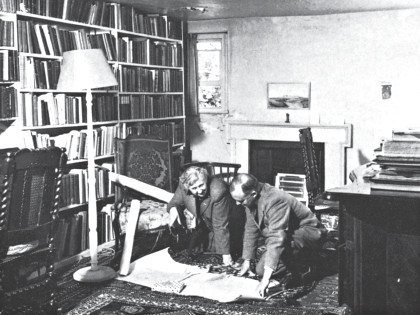
Agatha Christie and Max Mallowan in the library of Winterbrook House.
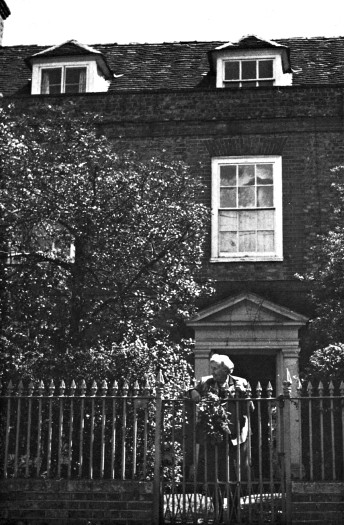
Agatha Christie outside the small Queen Anne Winterbrook House in Wallingford.
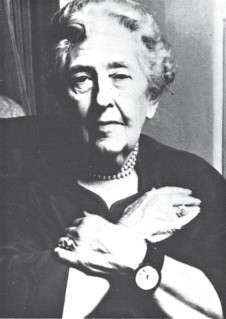
Dame Agatha Christie.

Agatha Christie was made a Dame Commander of the British Empire in 1972,

Agatha’s hair is matched for the wax model in Madame Tussaud’s in 1972,
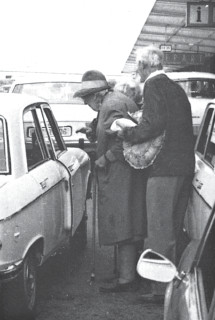
An elderly Agatha Christie arrives in Nice in 1972.
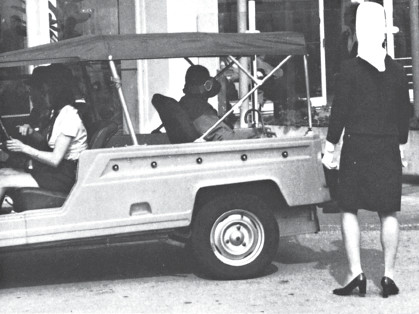
Agatha Christie was driven in an unconventional form of transport, a jeep, when she was in the south of France in 1972. She still shunned the publicity which she had always disliked.

Suspects on the train discuss the murder in John Brabourne’s hugely successful 1974 version of Murder on the Orient Express.
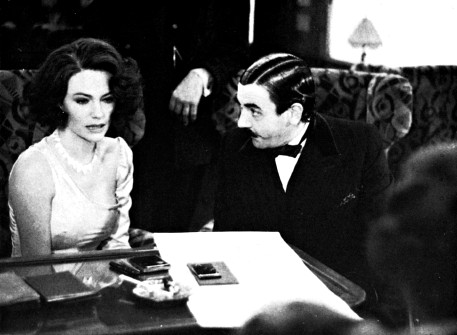
Hercule Poirot (Albert Finney) interviews Countess Andrenyi (Jacqueline Bisset) in Murder on the Orient Express.
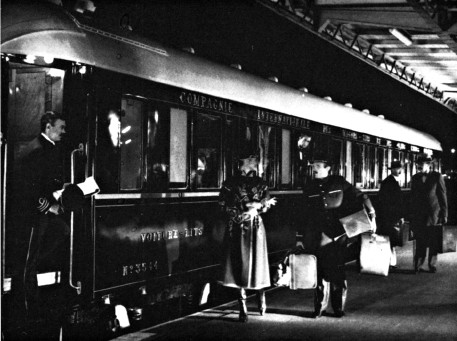
The Venice Simplon Orient Express was revived in 1982 and now runs from Victoria Station, London to Venice.
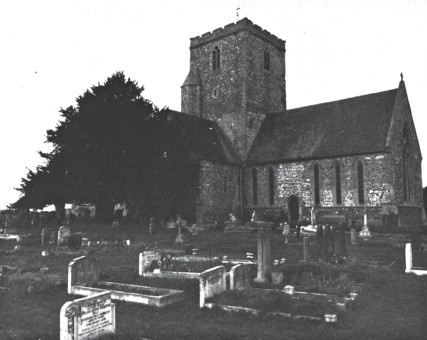
St Mary’s Church in Cholsey, Berkshire where Agatha Christie was buried in 1976.
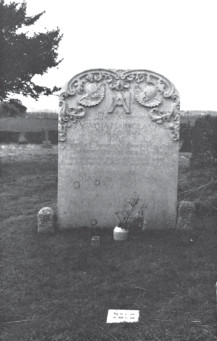
The tombstone of Agatha Christie and Max Mallowan in St Mary’s Churchyard.
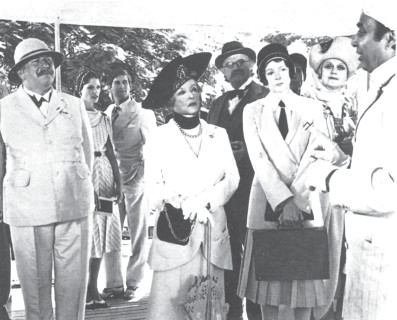
The 1978 film Death on the Nile, produced by John Brabourne and Richard Goodwin, was a great box-office success. The star-studded cast was headed by Peter Ustinov as Hercule Poirot.
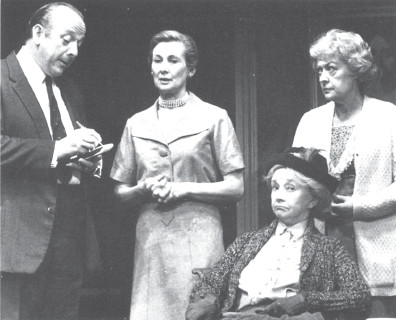
A scene from A Murder is Announced with James Grout (Inspector Craddock), Dinah Sheridan (Letitia Blacklock), Dulcie Gray (Miss Marple) and Eleanor Summerfield (Dora Bunner).
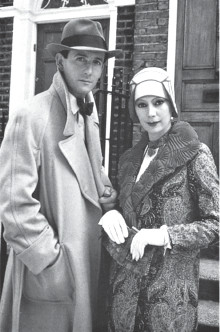
The 1980s gave birth to three acclaimed series of Agatha Christie Television Adaptations:
James Warwick and Francesca Annis were LWT’s Partners in Crime IN 1983
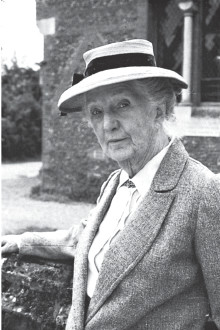
Joan Hickson starred as BBC’s Miss Marple between 1984 and 1992.

Hugh Fraser and David Suchet in LWT’s Agatha Christie’s Poirot (1989–1996).
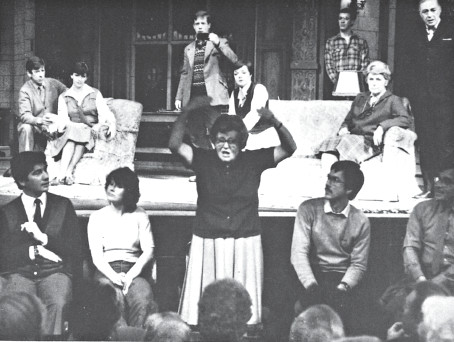
Interpreters translate The Mousetrap into sign language for a deaf audience during the special matinée performance on 14 May 1981.
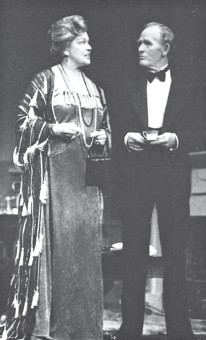
Gordon Jackson (Superintendent Battle) and Margaret Courtenay (Mrs Oliver) in Cards on the Table which opened at the Vaudeville Theatre on 9 December 1981.